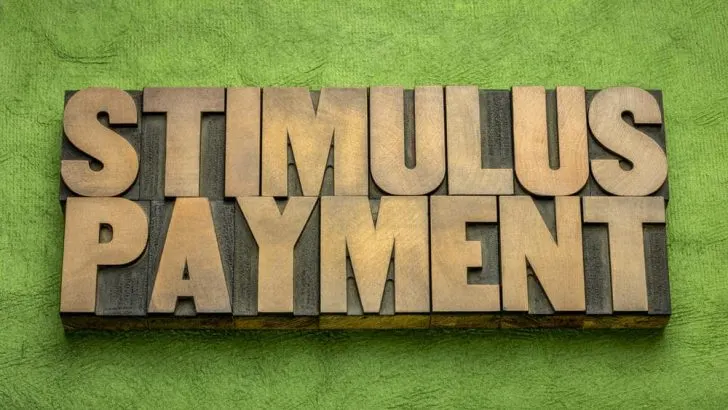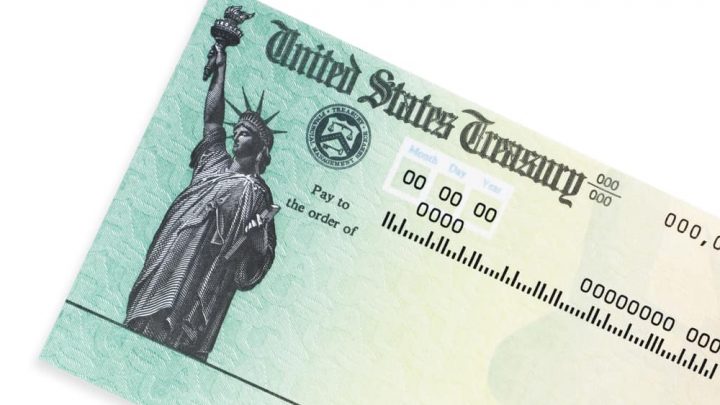 OK, South Florida, perhaps you’re starting to hear that people are getting their stimulus checks. Perhaps you’re wondering when you will get your check.
OK, South Florida, perhaps you’re starting to hear that people are getting their stimulus checks. Perhaps you’re wondering when you will get your check.
Well, there’s a new IRS tool called “Get My Payment” to track the stimulus checks. It was created to “provide people with the status of their payment, including the date their payment is scheduled to be deposited into their bank account or mailed to them.”
To keep up with latest news, sign up for the daily Miami on the Cheap newsletter. You can also follow us on Facebook and on Twitter.
The IRS said the new online tool will also let eligible people submit bank information to get their payment quicker than waiting for a paper check in the mail.
“Get My Payment” is active and can be found here. Be prepared with a copy of your income tax return as it will ask you for your Adjust Gross Income (line 8b); if you are due a refund or owe any money and how much; your bank’s routing number and your bank account number (both are at the bottom of your paper checks).
TurboTax has worked with the IRS and developed a portal of its own for those who want to calculate their AGI and submit direct deposit banking information.
UPDATE: We are hearing reports of glitches with the tool. According to The Washington Post, the IRS has given potential reasons for the errors, including:
- You aren’t eligible for a payment.
- Your payment is based on your status as a Social Security, disability or Railroad Retirement beneficiary, in which case your payment information isn’t available on the “Get My Payment” tool.
- You have not filed a 2018 or 2019 federal tax return.
- You filed your 2019 return, but it hasn’t been fully processed.
- You used the non-filers tool, but the information you entered is still being processed.
- There’s a problem verifying your identity when answering the security questions.
The IRS says it is working to fix any glitches.
In the meantime, here’s everything else you need to know about these one-time payments.
What is a stimulus check?
The Coronavirus Aid, Relief, and Economic Security Act (CARES Act) was signed into law on March 27, 2020. The $2 trillion economic stimulus package includes a one-time payment of up to $1,200 per person. Many Americans qualify for this help that the federal government is providing to U.S. citizens.
To clarify, the stimulus payment is not taxable income. You will not owe taxes on this money. Also, a stimulus check is separate from your tax refund. If you’re due a tax refund, you will still get that if you file your return.

Who will get a stimulus check and how much will it be?
Not everyone will get a payment through the stimulus package, although many will. You can be eligible for a stimulus payment whether you’re employed full time, part time, self-employed, unemployed or retired.
You must have a Social Security number or Adoption Tax Identification Number. You cannot be claimed as a dependent on someone else’s tax return.
Whether or not you qualify is also determined by your adjusted gross income (AGI) from your 2019 tax return, or your 2018 tax return if you haven’t filed yet. To receive the full stimulus payment amount of $1,200 per person, your AGI must be the following amounts according to your tax filing status:
- Single filer, married filing separately or as a qualified widow: your AGI must be less than $75,000.
- Head-of-Household: your AGI must be less than $112,500.
- Married filing jointly: your AGI must be less than $150,000.
If your AGI is above the amounts listed above, your credit will be reduced by $5 for every $100 over the limit.
Parents will receive a $500 payment for each child younger than 17.
Americans on disability or Social Security retirement will receive the maximum amount of $1,200 per person.
H&R Block has a handy stimulus check calculator you can use to help you figure out how much you may get from your stimulus check.
How and when do stimulus checks arrive?
If you filed your 2018 or 2019 taxes, you don’t need to do anything. The Internal Revenue Service will automatically direct deposit or mail payments to the bank account listed on your last tax return, or it will mail a check to the address on record if no account information is available.
Stimulus payments will also go automatically to Americans who are on Social Security retirement and disability, regardless of whether they have filed a tax return in 2018 or 2019.

What’s the timetable?
Americans with the lowest income will get mailed checks first.
Here’s the approximate timetable for the first checks:
- Taxpayers with income up to $10,000: April 24
- Taxpayers with income up to $20,000: May 1
- Taxpayers with income up to $40,000: May 15
Note: As President Trump announced on April 15 that his signature appear on all the paper checks, there may be a delay in when you receive your check.
The rest of the checks will be issued by gradually increasing income increments each week. Households earning $198,000, who file jointly, will get their reduced checks on Sept. 4.
The last group of checks will be sent on Sept. 11 to those who didn’t have tax information on file and had to apply for checks.
It could take up to 20 weeks or more for a paper check to arrive.
If you haven’t filed a tax return in 2018 or 2019, file your 2018 taxes now to ensure that you get your stimulus payment isn’t impacted.
The IRS website states that the government plans to mail a letter about this stimulus check payment to the taxpayer’s last known address within 15 days after the payment is paid, saying how the payment was made, and how you can report to them if you did not receive payment.
Beware of stimulus package scams
Any situation can bring about a scam, so beware of suspicious communication from anyone claiming to be involved with processing stimulus checks.
There have been reports of fake IRS calls and emails seeking bank account and other private information in order to deposit stimulus checks.
The federal government will not call or email you or reach out via social media. Any outreach like this is likely a scam so don’t reply, share any personal information or send money.
For more information on Economic Impact Payments, click here.
Information from our parent site, Living On The Cheap, was used to supplement this report.
More useful resources
- Free employment resources & recruitment events for Florida residents
- Free food-distribution events & food-drive drop-off information
- Register for free library e-card for lots of online resources
- Inexpensive rabies vaccines for pets
- Libraries offer drive-up & walk-up opportunities
- Deals for veterans, first responders & other front-line heroes
- Rent, utilities & other financial resources for Florida residents
- Free school supplies, events & resources
- Where to get a COVID vaccine in Miami-Dade
- Check out Miami On The Cheap’s special coupons page



Comments
Tyler
April 19, 2020 at 9:32 pm
My taxes were direct deposited in my parents bank account they got theirs but I didn’t get mine.
Josie Gulliksen
April 19, 2020 at 9:32 pm
I would continue to check the link within the post that takes you to the tracker. And perhaps you need to alert them of this situation as well so they know.
Rebecca Petermeyer
April 19, 2020 at 1:21 pm
This is ridiculous! I am laid off. I have 4 children. I won't get my 1st unemployment check until May 11th. I'm waiting on my stimulus check! I filed my taxes at Jackson Hewitt on January 22nd, 2020. I have children to feed and bills to pay! What is taking so long? Also I'm still waiting on my State refund. I feel really depressed. I don't know what to do. I've been donating plasma and doing instacart. I feel drained and overwhelmed. I have so much depression and anxiety! I don't know what to do. My checking account is in the negative. How are we supposed to survive like this? I've applied for government assistance. No response yet!!! I'm not surprised. I've gone to food pantries. I'm running out of options!!! Please help.
Josie Gulliksen
April 19, 2020 at 1:21 pm
Perhaps this will help:
https://development.miamionthecheap.com/free-groceries-get-help-or-help-others-obtain-a-box-of-food/
There is a link to let you know where the next Saturday distribution is taking place. I hope that helps.
Allison E
April 18, 2020 at 11:48 am
People who are on ssi. Ssdi that do not have to file taxes are getting them next week- first week in may. Direct express cards and bank accounts. Paper checks may take up to 20 weeks to arrive.
Josie Gulliksen
April 18, 2020 at 11:48 am
Thanks for that info!
Renee Badger
April 17, 2020 at 1:37 am
I'm on social security and do not file taxes. Where is my check?
Josie Gulliksen
April 17, 2020 at 1:37 am
Best to click on the links within our post for the most current information. I believe the service launched recently.
Peggy
April 17, 2020 at 1:35 am
If fi didn't file taxes in 2018 and 2019 was rejected because I can't verify my identity where will my money go?
Josie Gulliksen
April 17, 2020 at 1:35 am
Best to click on the links within our post for the most current information. I believe the service launched recently.